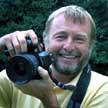
How times have changed. I am fortunate to be of a generation that that could photograph children without being demonised as an evil pervert. Point a camera at a child these days and you will immediately be branded a dangerous monster. This paranoia, fostered and encouraged by official agencies, has even got through to the children themselves and we are all poorer for the loss of beautiful images of childhood.
 But let’s not be too negative, there are still many enlightened parents who are overjoyed to have natural, unposed photographs of their children, and you may have children or grandchildren of your own… perfect subjects.
But let’s not be too negative, there are still many enlightened parents who are overjoyed to have natural, unposed photographs of their children, and you may have children or grandchildren of your own… perfect subjects.Sensible parents can be a tremendous help by keeping an eye on things (wiping runny noses etc.) but only assisting when asked. It can be very frustrating when mum moves in to straighten clothing just at the moment when the child’s expression is perfect and you press the shutter button. So talk things through in a really informal, friendly way before the photo session starts. Stress that you will all be working together to produce lovely pictures of the children. You need their help.
Lower left photograph: From behind the camera I asked Rory what he had in his bulging pockets. He continued to look out of the window while distractedly fumbling around in his pockets to find out. This made another natural pose
TEN THINGS TO DO BEFORE PHOTOGRAPHING CHILDREN INDOORS
Talk through your plan with parents
Find a position in good natural light
Try to ‘confine’ your subjects in some way
Check the background for unsightly elements
Take your light reading and set the exposure
Try to set a shutter speed of at least 1/125sec
Set white balance
Have toys or props ready
Drawing books make good reflectors
 Photograph of the two children: The pictures were taken beside a patio window. A large white reflector was placed off picture to the right. Getting the two children in the same frame and with good expressions proved almost impossible. Niamh would always go one way, Rory the other. When they came together it was for a fraction of a second; they were always on the move, and so was the camera. Shooting at 1/45sec at f3.3 without a tripod has taken its toll – and this picture is not quite sharp as a result
Photograph of the two children: The pictures were taken beside a patio window. A large white reflector was placed off picture to the right. Getting the two children in the same frame and with good expressions proved almost impossible. Niamh would always go one way, Rory the other. When they came together it was for a fraction of a second; they were always on the move, and so was the camera. Shooting at 1/45sec at f3.3 without a tripod has taken its toll – and this picture is not quite sharp as a result Bottom photograph: WRONG! The problem with this sort of set-up is that there is a high possibility that when your subject leans over the book, you will only see the top of his head – like this
Bottom photograph: WRONG! The problem with this sort of set-up is that there is a high possibility that when your subject leans over the book, you will only see the top of his head – like this


























 I try to persuade my students not to get too hung up with the importance of depth of field, but it really is a vital factor to consider when photographing reflections, and, for maximum depth, the smallest possible aperture should be used. It is not just the object reflecting the image that needs to be in focus, but the reflection itself, which could be some distance away. For maximum depth of field, focus on a spot about one third the way between the nearest (the reflector) and the furthest (the reflected images) points which need to be sharp. The depth of field preview button on your camera can be very useful for checking that everything will be in focus.
I try to persuade my students not to get too hung up with the importance of depth of field, but it really is a vital factor to consider when photographing reflections, and, for maximum depth, the smallest possible aperture should be used. It is not just the object reflecting the image that needs to be in focus, but the reflection itself, which could be some distance away. For maximum depth of field, focus on a spot about one third the way between the nearest (the reflector) and the furthest (the reflected images) points which need to be sharp. The depth of field preview button on your camera can be very useful for checking that everything will be in focus.


 The ‘reflection’ theme is a regular subject for camera club competitions, and rightly so. It’s a theme that’s open to all sorts of imaginative interpretations - from abstract ideas to perfectly symmetrical mirror images.
The ‘reflection’ theme is a regular subject for camera club competitions, and rightly so. It’s a theme that’s open to all sorts of imaginative interpretations - from abstract ideas to perfectly symmetrical mirror images.














